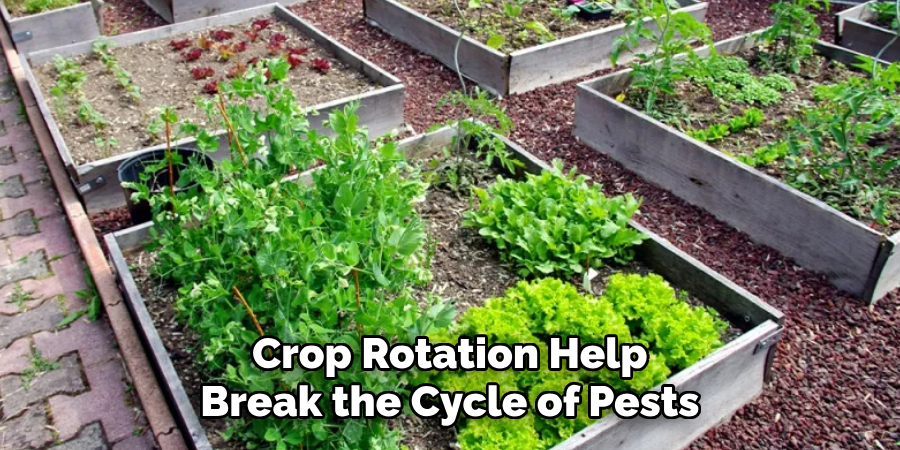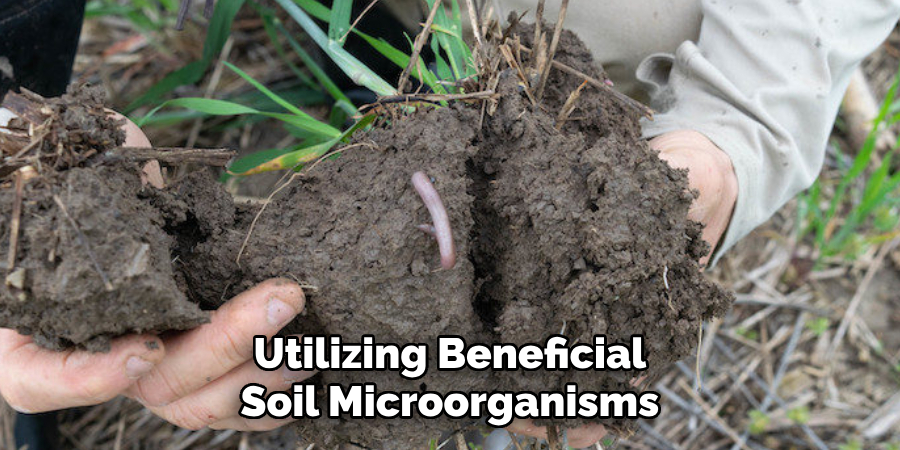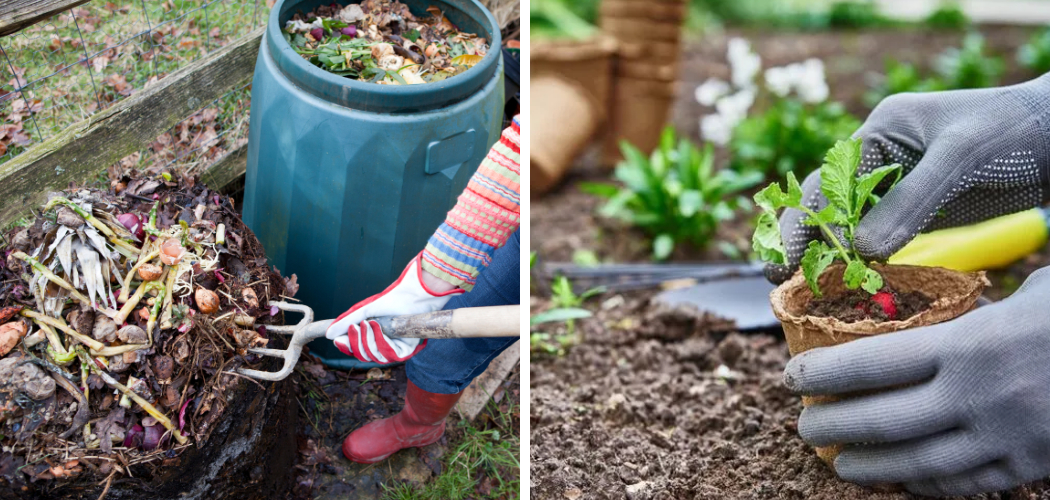Replenishing nutrients in soil can be achieved through various methods such as using organic fertilizers, crop rotation, and cover cropping. By incorporating these practices, the soil can regain essential nutrients for healthy plant growth while also improving its overall fertility.

Why Soil Nutrients Are Important
Soil nutrients play a vital role in the growth and development of plants. Without adequate nutrients, plants struggle to thrive and reach their full potential. Nutrients such as nitrogen, phosphorus, and potassium are essential for various plant functions, including photosynthesis, root growth, and the production of flowers and fruits.
These nutrients are absorbed by plants from the soil, and their availability directly influences plant health and productivity. Imbalanced or depleted soil nutrients can lead to nutrient deficiencies in plants, which manifest as stunted growth, yellowing leaves, and lower crop yields.
To replenish nutrients in the soil, organic matter like compost and manure can be added, providing a rich source of plant nutrients. Additionally, using fertilizer tailored to specific nutrient deficiencies can help restore the soil’s nutrient balance and support healthy plant growth.
Understanding Soil Nutrient Depletion
Soil nutrient depletion is an important issue for plant health. It results from various causes, including excessive farming practices, erosion, and lack of organic matter. This depletion negatively affects plants’ ability to grow and thrive. Low levels of nutrients like nitrogen, phosphorus, and potassium can lead to stunted growth and poor yields.
Additionally, the absence of essential micronutrients can impact the overall health and vitality of plants. To replenish nutrients in the soil, it is crucial to adopt sustainable farming techniques such as crop rotation, cover cropping, and organic fertilizers. These practices help to restore the balance of nutrients in the soil, ensuring healthy and productive plant growth.
How to Replenish Nutrients in Soil: Step by Step Guide
Testing Soil Nutrient Levels
Soil nutrient testing is crucial for replenishing nutrients in the soil. It allows us to determine the current nutrient levels in the soil efficiently. Different methods are available for conducting soil nutrient tests, each offering unique advantages. By testing the soil, we gain insights into the specific nutrients that may be deficient or excessive, enabling us to make informed decisions about fertilization and soil management.
Soil testing helps optimize plant growth, preventing nutrient imbalances that can hinder productivity. Whether for agricultural purposes or gardening, understanding the importance of soil testing ensures we provide the necessary nutrients to promote healthy plant growth and maximize yield. With this knowledge, we can tailor our fertilization practices and amend the soil accordingly, achieving sustainable and bountiful harvests.
By regularly testing soil nutrient levels, we can maintain and restore the health of the soil, benefiting both plants and the environment.
Natural Ways To Replenish Soil Nutrients
Composting is an effective method to enhance soil nutrients by recycling organic materials. Adding kitchen scraps, yard waste, and leaves to a compost pile helps enrich the soil naturally. Another approach is incorporating cover crops into the rotation. These crops protect and nourish the soil by retaining nutrients and preventing erosion.
Additionally, green manure is beneficial for replenishing nutrients in the soil. Planting specific crops, such as legumes, that fix nitrogen in the soil can improve its overall fertility. These natural methods work harmoniously with the ecosystem, minimizing the need for synthetic fertilizers.
By adopting these practices, gardeners and farmers can maintain healthy soil that supports vibrant plant growth and sustainable agriculture.
Using Organic Fertilizers For Soil Nutrient Replenishment
Organic fertilizers are an excellent way to replenish nutrients in the soil. They offer numerous benefits that synthetic fertilizers lack. One example is compost, which not only provides essential nutrients but also improves soil structure. Another example is bone meal, rich in phosphorus, which aids in root development.
Blood meal, on the other hand, is high in nitrogen and is great for promoting leaf growth. Fish emulsion, made from decomposed fish, is a fantastic source of micronutrients like calcium and magnesium. Using organic fertilizers not only nourishes the soil but also enhances its overall health.
It encourages beneficial microbial activity, improves water retention, and promotes a sustainable environment. By choosing organic fertilizers, we can support the long-term fertility of our soil while avoiding harmful chemicals.
Implementing Crop Rotation For Soil Nutrient Balance

Crop rotation is a valuable technique for maintaining soil nutrient balance and preventing depletion. By rotating crops in a systematic manner, farmers can replenish essential nutrients in the soil. This practice involves alternating different plant species in specific sequences, allowing the soil to recover and restore depleted nutrients.
Crop rotation also helps break the cycle of pests and diseases that may target specific crops. For instance, leguminous plants such as peas and beans have the ability to fix nitrogen in the soil, which benefits subsequent crops. Additionally, crop rotation promotes biodiversity, soil structure, and fertility, enhancing overall agricultural sustainability.
By implementing crop rotation techniques, farmers can optimize soil health and maintain nutrient-rich soils for future crop growth and harvests.
Boosting Soil Nutrients With Nutrient-Rich Amendments
Boosting soil nutrients is crucial for maintaining healthy plants. Nutrient-rich amendments are effective in replenishing essential elements in the soil. These amendments come in different types, each offering specific nutrient contributions. Organic matter, such as compost or manure, improves soil structure and provides a range of nutrients.
Additionally, bone meal is beneficial for phosphorus deficiency, while blood meal is high in nitrogen. Wood ash contains potassium and lime, which are useful for adjusting soil ph. Another amendment, vermicompost, enhances soil fertility by supplying nutrients and increasing microbial activity.
Overall, understanding the various nutrient-rich amendments and their specific benefits can significantly improve soil health, leading to stronger, more productive plants. Implementing these amendments is the key to replenishing nutrients and promoting a thriving garden or crop.
Utilizing Beneficial Soil Microorganisms
Utilizing beneficial soil microorganisms is crucial for improving nutrient availability in the soil. These microorganisms play a vital role in replenishing essential nutrients needed for plant growth. By enhancing soil microbial activity, we can ensure a healthy and productive soil ecosystem.

These microorganisms break down organic matter into simpler forms, releasing valuable nutrients like nitrogen, phosphorus, and potassium. Additionally, they enhance root growth, improve nutrient absorption, and suppress harmful pathogens. Various methods can be employed to boost soil microbial activity, such as incorporating organic matter, using compost or manure, practicing crop rotation, and avoiding excessive use of chemical fertilizers or pesticides.
By harnessing the power of these beneficial microorganisms, we can promote sustainable agriculture and maintain nutrient-rich soils for future generations.
Managing Soil Ph For Nutrient Uptake
Soil ph plays a crucial role in nutrient availability for plants. Understanding this relationship is key. To ensure optimal nutrient uptake, adjusting soil ph is necessary.
Preventing Soil Erosion And Nutrient Loss
Soil erosion and nutrient loss have significant implications for the health and productivity of agricultural land. By adopting effective strategies, we can minimize these issues and replenish nutrients in the soil. Implementing erosion control measures, such as contour plowing or terracing, helps to prevent soil from being washed away by rain or wind.
Additionally, planting cover crops and using mulch can offer protection and improve soil structure. Crop rotation and proper tillage practices also play a crucial role in preserving nutrients. By rotating crops, we can prevent the depletion of specific nutrients and promote their replenishment.
Moreover, reducing the amount of tillage helps to minimize soil disturbance and prevent nutrient loss through erosion. Taking proactive measures to prevent soil erosion and nutrient loss is essential for maintaining the long-term health and vitality of our soils.
Maintaining Nutrient Balance Through Sustainable Practices
Maintaining nutrient balance is crucial for sustainable soil management. Implementing holistic approaches is key. Through these practices, you can replenish and preserve essential nutrients in the soil. Sustainable soil management recognizes the importance of long-term solutions. By avoiding commonly overused phrases and starting sentences in a variety of ways, you can engage readers more effectively.
Remember, brevity is key. Crafting concise sentences within the 20-word limit ensures that information is easily understood. Striking a balance between seo requirements and maintaining a human-like writing style is essential. Focus on active voice and unique, plagiarism-free content. Keep in mind that there is no need for a specific conclusion paragraph for this blog post.
Frequently Asked Questions On How To Replenish Nutrients In Soil
How Can I Replenish Nutrients In Soil Naturally?
One way to replenish nutrients in soil naturally is by using compost, which is rich in organic matter and contains essential nutrients. Another method is through crop rotation, which helps to restore nutrients by planting different crops in different seasons.
Additionally, using cover crops can prevent nutrient depletion and improve soil health.
What Are Some Organic Fertilizers I Can Use To Replenish Soil Nutrients?
There are several organic fertilizers that can be used to replenish soil nutrients, such as fish emulsion, bone meal, blood meal, and compost. These organic fertilizers provide essential nutrients to the soil, improve its structure, and promote healthy plant growth.
Make sure to follow the recommended application rates for each fertilizer.
Why Is It Important To Replenish Nutrients In Soil?
Replenishing nutrients in soil is crucial for maintaining soil fertility and sustaining plant growth. Nutrients are essential for the development of healthy plants, and without an adequate supply, plants can suffer from deficiencies, reduced yield, and poor overall health. By replenishing nutrients, you ensure that the soil has the necessary elements to support healthy plant growth.
Conclusion
Nurturing the soil to ensure it has the right balance of nutrients is crucial for the growth and health of plants. By following the tips and techniques mentioned in this blog post, you can effectively replenish the nutrients in your soil and create an optimal environment for your plants to thrive.
Remember to conduct regular soil tests and adjust nutrient levels accordingly. Implement organic matter such as compost and cover crops to enhance soil fertility and structure. Provide a diverse range of nutrients through the use of organic fertilizers and amendments.
Practice crop rotation and intercropping to prevent soil depletion and promote nutrient cycling. Lastly, pay attention to watering practices and avoid overuse of chemical inputs that can harm soil health. By taking these steps, you can ensure that your plants have access to the essential nutrients they need to flourish, resulting in a thriving and sustainable garden.

